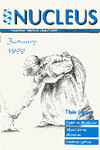The status of the embryo is one issue that has profound implications for the way we practise medicine; not least for the advice we give about contraception. Contraceptives usually act by one of three ways; by preventing ovulation, by interfering with sperm and ovum transport, or by preventing implantation of an already fertilised egg. With some contraceptives several of these mechanisms may be acting concurrently. Members of CMF who believe that human life deserves utmost respect from the time of fertilisation are not generally willing to use or advise the use of methods acting after fertilisation. However, information about which method fits in which category can be difficult to obtain. What are the facts?
The following information is adapted with permission from a review written for CMF by John Guillebaud, Professor of Family Planning and Reproductive Health at University College London. While Prof Guillebaud’s personal view, after prayerful consideration,[1] is that implantation is the biological event that separates family planning from abortion, he has helpfully outlined the relevant literature for those holding the alternative opinion.
How can we know fertilisation has occurred?
The main problem we face is that it is almost impossible to tell whether or not fertilisation, as opposed to implantation, has occurred in any given cycle. There is no biochemical marker for fertilisation and finding unimplanted embryos in the menses is an impossible task! However, we can know if implantation has occurred by measuring embryo-specific substances in the maternal blood.
Two useful review articles are those by Chard [2] and Ortiz & Croxatto.[3] The first relates to the frequency of early pregnancy loss. The ‘bottom line’ is perhaps on page 181 of Chard which highlights the fact that human chorionic gonadotrophin (hCG) is first measurable in the maternal circulation just after the time of implantation. Hence with present technology, research showing no hCG elevation during use of a contraceptive tells us that it does not operate after implantation. It might still however, at least on some occasions, operate after the time of fertilisation, by prevention of implantation or direct destruction of the blastocyst.
Intrauterine contraceptive devices (IUCDs)
For someone requiring a contraceptive method only operating before fertilisation, any method linked with measurable chorionic activity would be clearly off limits, and here one can certainly use a study by Videla-Rivero et al [4] which showed some interesting results (see Table)
Control population (sexually active, no contraception):
hCG increase detectable in 32% (n=22)
Inert IUCDs:
hCG increase in 20% (n=40)
Copper IUCDs:
hCG increase in 4% (n=41)
Levonorgestrel-IUS (Mirena):
no evidence of chorionic activity (n=19)
On the evidence of this study it seems that both copper and inert IUCDs sometimes operate after fertilisation. With regard to the Levonorgestrel-IUS, these findings are compatible with no fertilisation occurring (either through the levonorgestrel effect on cervico-uterine mucus blocking sperm migration, or through preventing ovulation). But unfavourable cervical mucus was not always observed by Barbosa et al [5] and we know that ovulation does still occur in most cycles. Is the levonorgestrel effect on sperm migration within the uterine fluid enough to stop the sperm reaching any egg in the tubes? There are no direct data; but indirectly, we know that sperm have obviously reached the egg in the very rare cases of ectopic pregnancy that do occur with this method. Coupled with the first point above, that there is no testable biological marker of the time between fertilisation and implantation, we must remain unsure even with this contraceptive that it absolutely never operates post-fertilisation.
Hormonal Methods
Turning to the systematically applied hormonal methods, Prof Guillebaud agrees with Patrick McCrystal [6] that the progestogen-only pill (mini-pill) and the contraceptive implant methods including Norplant must sometimes act post-fertilisation. Both have been shown to permit ovulation in many cycles and it is unlikely that the reduced sperm-penetrability of cervico-uterine mucus explains all the failures to conceive when there is ovulation. Additional evidence, though not proof, of this is provided by the occurrence of ectopic pregnancies.
However, the low dose combined oral contraceptive (COC), provided it is taken conscientiously, and the injectable Depo-Provera are very effective at preventing ovulation, with practically zero pregnancy rates either intrauterine or extrauterine. It is scientifically justifiable therefore, to conclude that these methods do regularly work prior to fertilisation. In these two cases the fact that the methods are capable of working by blocking implantation does not mean that they ever act by that back-up mechanism.
Low oestrogen combined pill
Obviously a forgetful combined pill-taker, particularly a user of say Loestrin 20 or Mercilon, which are among the lowest dose products, might run the risk of ovulation. If pregnancy did not follow this might mean that the contraceptive had acted by blocking implantation. Most of the important references about the extreme rarity of ovulation if women lengthen the pill-free time through non-compliance, are available in an article by Korver et al.[7] One could recommend that Christians holding conservative views on the embryo, who are perhaps worried about their own compliance, use the so-called ‘tricycle regimen’. With this method (described fully below), the contraceptively ‘dangerous’ pill-free intervals are shortened and taken less frequently.
The Depo-Provera injection
Depo-Provera is a brilliantly effective anovulant if the injections reliably occur every twelve weeks. There is an option for injections to be taken every ten weeks, but even in this context (to eliminate the risk of the unacceptable back-up mechanism being utilised), Prof Guillebaud would only consider shortening the injection interval for a recognised indication (eg use of an enzyme-inducing drug).
In summary, with perfect compliance, he feels one really could be confident that even in say, 20 years’ use of the COC or Depo-Provera, there would be no single occasion when a post-fertilisation mechanism would be utilised. Moreover, he says, ‘Having thus done all possible in the light of the available data, might not a believer legitimately ask the Lord to ensure this?’
‘Safe’ contraceptives
On the basis of the evidence, the following methods of contraception are ‘safe’ as far as the embryo is concerned:
Sterilisation, male and female
- The combined oral contraceptive, provided the pill-free interval (PFI) is never lengthened. For added security the latter could be shortened to four days on a regular basis. Or, if preferred, there is the option of using the so-called ‘tricycle regimen’ (in which the PFI is eliminated for four, three or sometimes two monophasic pill cycles, and then also shortened after each run of packets)
- The injectable Depo-Provera given every twelve weeks. For added security (usually unnecessary in Prof Guillebaud’s view) the injection interval could be shortened to every ten weeks
- Full breast-feeding combined with the progestogen-only pill or with Depo-Provera. With the former, there would be a slight risk of breakthrough ovulation (and hence of the anti-implantation mechanism being given a chance to act) as breast-feeding declines through weaning. Hence a woman with the ethical view in question would need to switch to the combined pill, or use additional barrier contraception effectively as soon as the baby was not obtaining 100% of its nutrition from the mother
- Male and female barrier methods, and all spermicides
- All methods based on fertility awareness (ie ‘natural family planning’ in which intercourse is avoided around the time of ovulation)
‘Unsafe’ Contraceptives
The following, however, may indeed act by preventing the implantation of an embryo:
- All IUCDs
- Emergency contraception pill
- Progestogen only pill (mini-pill)
- Norplant (contraceptive implant)
Conclusion
How these facts affect our personal and professional behaviour will be determined ultimately by the views we hold on the human embryo. There is not space to review those again here, but the arguments for both sides have been hotly debated before in CMF, both in the Journal of the CMF [8,9] and in Nucleus.[10,11,12]
































